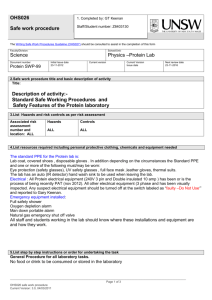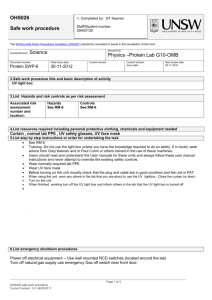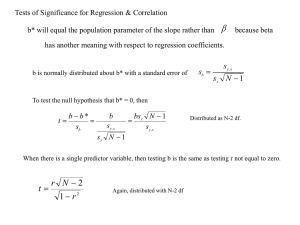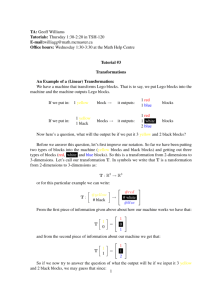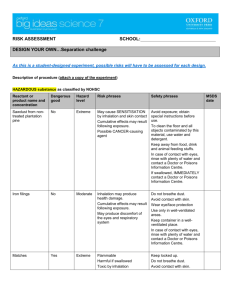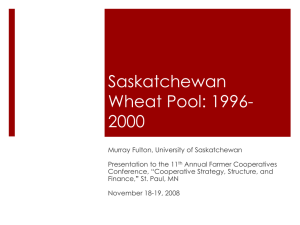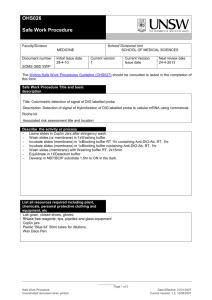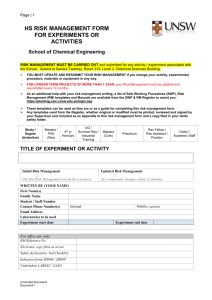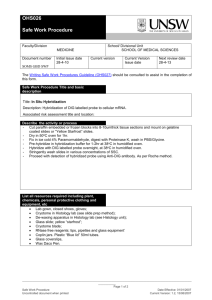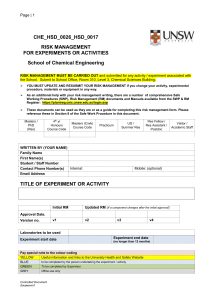Workstation Self Assessment Check List
advertisement
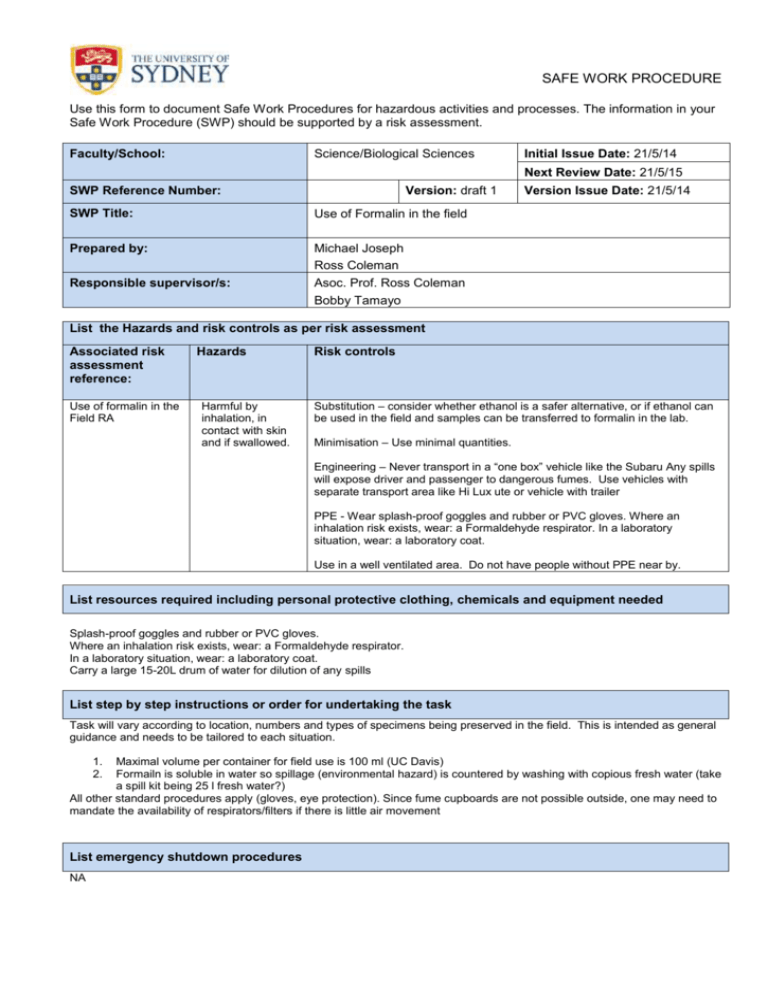
SAFE WORK PROCEDURE Use this form to document Safe Work Procedures for hazardous activities and processes. The information in your Safe Work Procedure (SWP) should be supported by a risk assessment. Faculty/School: Science/Biological Sciences Initial Issue Date: 21/5/14 Next Review Date: 21/5/15 SWP Reference Number: Version: draft 1 SWP Title: Use of Formalin in the field Prepared by: Michael Joseph Ross Coleman Responsible supervisor/s: Asoc. Prof. Ross Coleman Bobby Tamayo Version Issue Date: 21/5/14 List the Hazards and risk controls as per risk assessment Associated risk assessment reference: Use of formalin in the Field RA Hazards Harmful by inhalation, in contact with skin and if swallowed. Risk controls Substitution – consider whether ethanol is a safer alternative, or if ethanol can be used in the field and samples can be transferred to formalin in the lab. Minimisation – Use minimal quantities. Engineering – Never transport in a “one box” vehicle like the Subaru Any spills will expose driver and passenger to dangerous fumes. Use vehicles with separate transport area like Hi Lux ute or vehicle with trailer PPE - Wear splash-proof goggles and rubber or PVC gloves. Where an inhalation risk exists, wear: a Formaldehyde respirator. In a laboratory situation, wear: a laboratory coat. Use in a well ventilated area. Do not have people without PPE near by. List resources required including personal protective clothing, chemicals and equipment needed Splash-proof goggles and rubber or PVC gloves. Where an inhalation risk exists, wear: a Formaldehyde respirator. In a laboratory situation, wear: a laboratory coat. Carry a large 15-20L drum of water for dilution of any spills List step by step instructions or order for undertaking the task Task will vary according to location, numbers and types of specimens being preserved in the field. This is intended as general guidance and needs to be tailored to each situation. 1. 2. Maximal volume per container for field use is 100 ml (UC Davis) Formailn is soluble in water so spillage (environmental hazard) is countered by washing with copious fresh water (take a spill kit being 25 l fresh water?) All other standard procedures apply (gloves, eye protection). Since fume cupboards are not possible outside, one may need to mandate the availability of respirators/filters if there is little air movement List emergency shutdown procedures NA SAFE WORK PROCEDURE List Emergency procedures for how to deal with fires, spills or exposure to hazardous substances EYE: Hold eyelids apart and flush eye continuously with running water (there are eye wash hoses located in the sediment and sorting labs). Continue flushing until advised by the Poisons Information Centre (Poisons Hotline 13 11 26), or for at least 15 minutes. INHALATION: Leave area of exposure immediately. If other than minor symptoms occur seek urgent medical attention. If assisting a victim wear a face- mask to avoid inhalation. If the victim is not breathing apply artificial respiration and seek URGENT medical advice (dial 0-000). SKIN: Gently flush affected areas with water. Seek medical attention if irritation develops. INGESTION: For advice contact the Poisons Information Centre (Poisons Hotline 13 11 26) or a doctor (University Health Service: Holme x14095; Wentworth x13484). If swallowed, DO NOT induce vomiting. Submit RiskWare report. List Clean up and waste disposal requirements Large volumes of fresh water. Chemical spill kit – for laboratories. Allow to ventilate List references used in the development of this SWP, e.g. codes of practice WHS Act 2011 WHS Regulations 2011 MDSD ChemAlertII List competency required – qualifications, certificates, licensing, training - e.g. course or instruction: Staff approved to assess competence for this SWP SWP Sign off sheet SWP name and version: In signing this section the assessor agrees that the following persons are competent in following this SWP. Name Signature Date Competent Name Assessor/Authoriser of Assessor/Authoriser signature Page 2 SAFE WORK PROCEDURE Page 3
